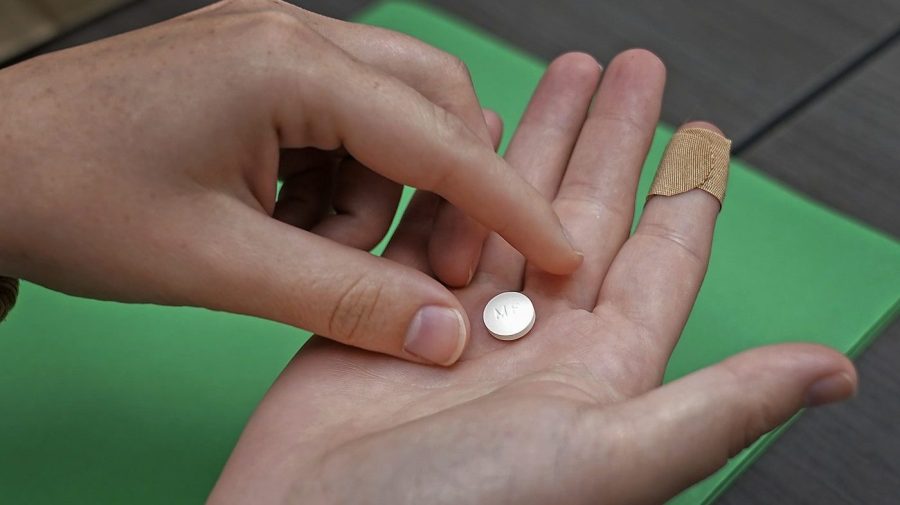The battle over abortion pills is likely heading to the Supreme Court, whose ruling last year overturning Roe v. Wade has Democrats and abortion rights advocates nervous about another blow.
The Justice Department has already said it will appeal a ruling from a federal appeals court Wednesday that said Mifeprex and its generic counterpart are allowed to stay on the market, but with restrictions that would roll back efforts by the Food and Drug Administration (FDA) to try to make the drug easier to access.
Those efforts included increasing the gestational age when mifepristone can be used up to 10 weeks of pregnancy rather than seven, allowing the medication to be mailed to patients, lowering the dosage and permitting providers other than physicians to prescribe the drug.
Nothing is changing for now, as the decision will remain on hold until the Supreme Court decides whether to take up the case.
“The fate of women’s access to this lifesaving drug is now back in the hands of the Supreme Court — a terrifying thought for those of us who don’t trust the right-wing justices who overturned Roe and who claimed abortion is an issue to be left to the states,” Sen. Ron Wyden (D-Ore.) said in a statement.
The Supreme Court doesn’t have to consider the case, but legal experts said the stakes are likely too high for it to ignore.
In addition, they noted a different federal appeals court is expected to rule in favor of the expanded access. The conflicting opinions would mean the justices would almost have to weigh in.
“The current state of the world, essentially, is that if an anti-abortion plaintiff filed something in Amarillo, Texas, that the most balanced court to hear that case is the Supreme Court. And that’s saying something, because the Supreme Court … overturned Roe,” said Greer Donley, an abortion law expert and associate professor at the University Pittsburgh Law School.
If the high court takes up the case, Donley said there are a few “foregone conclusions” about how some of the justices will vote, but some of the more institutionalist conservatives are open questions.
Still, “this is also a Supreme Court that has a lot of anti-abortion members. The fact that you’re trying to hang your hat on [Justices Brett] Kavanaugh or [Amy Comey] Barrett, you start to be very nervous,” Donley said.
The parties have 90 days to file an appeal to the Supreme Court, and the justices will then consider whether to take up the dispute, a process that typically takes weeks, if not longer.
The Supreme Court issued a temporary pause in the spring to let the appeals process continue, so as it currently stands, mifepristone can still be prescribed by telemedicine and sent through the mail for use at up to 10 weeks of pregnancy.
But if the ruling goes into effect, the ramifications could once again reshape abortion access across the country.
“Before these rules changed, medication abortion was nowhere near as attractive an option as it is today because of the logistical difficulties,” said Rachel Rebouché, dean of Temple University School of Law.
The rules pre-2016 required at least two in-person visits to a provider, and for the patient to take the drug in the provider’s office.
“If the [rules] require that patients not only pick up the pills in person, but then take them in person … it’s going to stress the brick-and-mortar facilities that are already way over subscribed with out-of-state patients” from states that have banned or severely restricted abortion, Rebouché said.
About half of all abortions nationwide are performed using mifepristone as the first of a two-pill regimen. Millions of women have used mifepristone since it was first approved in 2000, and serious side effects are extremely rare.
Leading medical organizations including the American College of Obstetricians and Gynecologists and the American Medical Association have said there is a greater risk of complications from wisdom tooth removal, colonoscopies and Viagra use.
Still, the ruling from the U.S. Court of Appeals for the 5th Circuit found the FDA did not follow proper procedure and fully take into consideration the safety of the drug when it made the changes to expand access.
“In loosening mifepristone’s safety restrictions, FDA failed to address several important concerns about whether the drug would be safe for the women who use it. It failed to consider the cumulative effect of removing several important safeguards at the same time,” Judge Jennifer Elrod wrote.
The Alliance Defending Freedom (ADF), the conservative Christian legal organization that represents the anti-abortion groups that sued FDA, said it was pleased with the ruling, despite it only being a partial victory, and had not yet made a decision whether to appeal the portion that allowed mifepristone to stay on the market.
“The 5th Circuit rightly required the FDA to do its job and restore crucial safeguards for women and girls, including ending illegal mail-order abortions,” ADF senior counsel Erin Hawley said in a statement.
“This is a significant victory for the doctors and medical associations we represent and, more importantly, the health and safety of women,” Hawley said.
Abortion rights advocates said they have no choice but to move forward and hope the Supreme Court justices would follow the law, rather than the politics.
“The idea that a court could substitute its own judgment and its distorted presentation of so-called science to undermine the scientists at the FDA seems like it would be something that would draw the Supreme Court’s attention,” said Lorie Chaiten, senior staff attorney at the national ACLU Reproductive Freedom Project.
And while she recognizes the concern of relying on the same justices who decided Dobbs, Wednesday’s ruling directly contradicts that decision.
If it takes effect, mifepristone would have the same restrictions even in states that have protected abortion access.
“In Dobbs, they sent this issue back to the states. And what this case is trying to do is say, not so fast,” Chaiten said.
